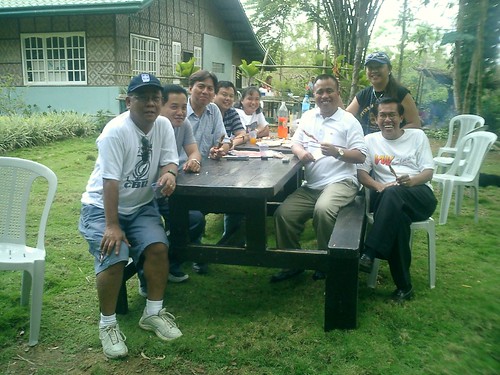PCIJ
USING what it says are "broad strokes," a group of academic and civil society leaders is recommending reforms in governance to address the country's lingering crisis and "strengthen a nation now perilously hurtling into chaos."
The proposed reforms are contained in a "Blueprint for a Viable Philippines" and cover an extensive range of issues, including the structure of government, taxation, the judiciary, international relations, housing, population, agrarian reform and industrialization, and health and education. The Blueprint describes the failure of existing policies and programs, and points the way to rekindling hope among the public, especially the youth. At the very least, its proponents say, the document hopes to shift the focus of public attention "from personality squabbles to the issues that truly matter."
Two of the Blueprint's main proponents are former UP president Francisco Nemenzo and Renato Constantino, Jr.
The Blueprint does not make any direct reference to the controversies hounding the Arroyo government nor to calls for her to step down. But Nemenzo was among those who had called, as the so-called Gloriagate scandal broke, for the President to resign and pave the way for a " transitional revolutionary government" such as the one that replaced the Marcos dictatorship in 1986.
The document traces its roots to informal discussions among the key proponents beginning in mid-2004. Roundtable forums were then held with individuals from government, the private sector, and NGOs. Integrated into the document were platforms and policy papers from the various groups that were consulted.
In remarks made as the document was first made public on Monday, Nemenzo said, "Painfully aware that ideas are worthless without the power to implement them, we offer the Blueprint to all political parties and social movements. They are welcome to adopt it in full or in part."
All the proposed programs, proponents say, aim to "take back the control of our natural resources (natural, manpower, financial, state, etc.) so that we may, with full sovereignty, determine the path of development which will secure the greatest welfare for the greater number of Filipinos."
The following are some of the Blueprint's recommendations:
On the structures and forms of government. The choice of structure and form of government is merely secondary to the need for a strong, autonomous, and willful State. After all, an effective parliamentary system requires the participation of mature political parties and a federal system demands the prior existence of stable institutions. Prepare the ground on which the new forms could grow.
On the national debt. It is no longer sustainable to allot an increasing percentage of the national resources to repay the country's loans. Initiate a comprehensive debt audit. Re-negotiate debts with other governments and multilateral institutions and secure a minimum 5-year relief from interest payments.
On the public finance and fiscal crisis. Tax leakage and corruption constrain government's ability to improve the country's fiscal picture. Shift to a simplified, universal and equitable gross taxation system.
On agricultural development. The agriculture sector is not growing and rural jobs and incomes are not increasing. Complete the implementation of the agrarian reform program and strengthen land and asset reform by bringing back reformed lands into the circuit of commerce.
On trade. Having failed to modernize prior to committing to multilateral trade agreements, the Philippines has become a net importer of agricultural products. Adjust trade policy to the requirements of the country's long-term economic growth. Freeze commitments to further trade liberalization while reviewing the impact of indiscriminate liberalization on the country's economy.
On labor and employment. The rate of unemployment has steadily gone up, as the export of labor has become the government's most favored response to the problem. Manage the overseas employment program so that its worst effects are avoided. At the least, forge bilateral agreements with host countries to ensure the welfare of overseas workers.
On cultural communities and autonomous regions. There is no national program to protect the nation's cultural communities. Constitutional provisions establishing autonomous regions have also remained mere promises. Take concrete steps to actualize the indigenous peoples' rights to preserve and develop their own way of life.
On population. The national government continues to neglect population policy. Address the main issues of unmet needs in relation to desired family size and population momentum.
On health. Public health has remained a very low priority for government. Reverse the decentralization of primary health care and install a real social health insurance system.
On education. The country is simply not spending enough on education. Double or triple the current budget for education. Develop a new curriculum that is strong in history and culture.
On the media. The mass media has played a minimal role in the formation of a mature polity, strengthening a sense of national identity, and promoting national culture. Instead it has become the principal instrument of a consumerist culture. Establish a regulatory and watchdog body that will monitor media abuse and recommend measures to align programming and content with social objectives.
Aside from Nemenzo and Constantino Jr., the other main proponents of the Blueprint are Prof. Randolf David, former UP Diliman Chancellor Roger Posadas, Isagani Serrano of the Philippine Rural Reconstruction Movement, and Ma. Victoria Raquiza of the Global Call to Action Against Poverty-Philippines.
Read the Blueprint.







No comments:
Post a Comment